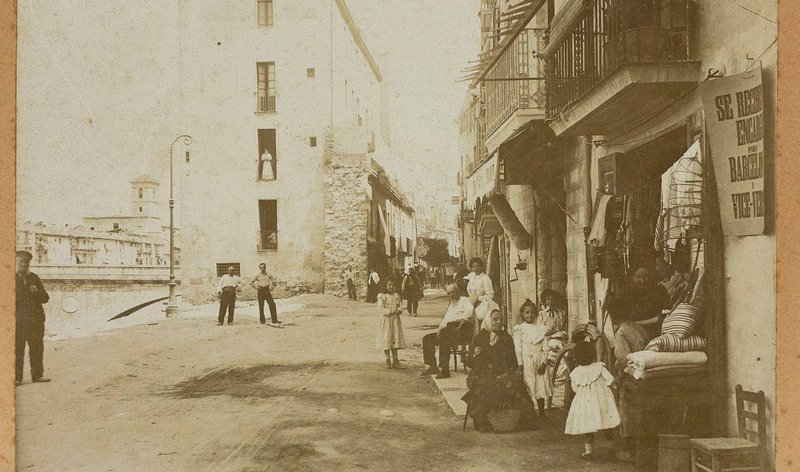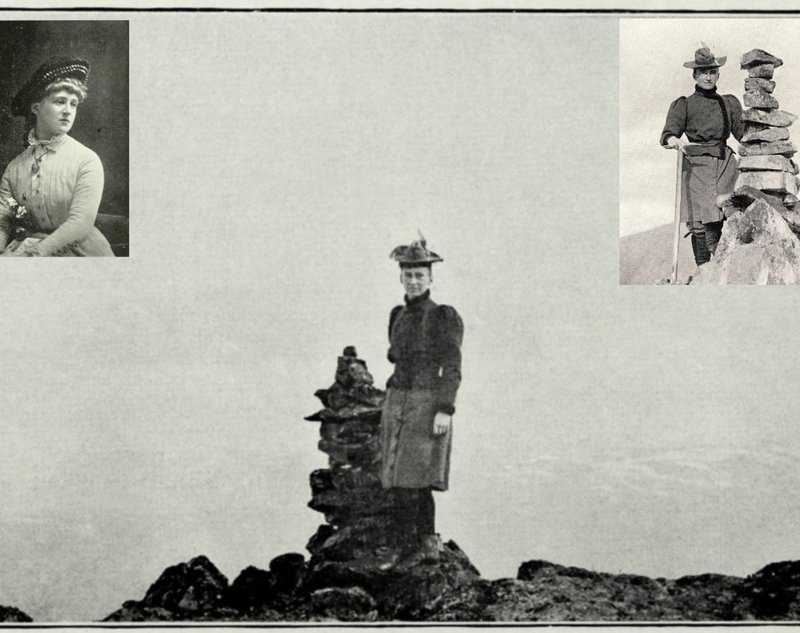Love at first sight
An Irish writer moves off the beaten tourist track only to discover the surprising city of Girona
Women Travellers in Catalan Lands
The first time I visited Spain, acting by the advice of those who had told me that it was not a “nice” country to travel in, and that the smaller towns were not “nice” for a woman alone to stop at, I went straight from Nîmes to Barcelona without pausing at Gerona. This was the first of several blunders caused by the erroneous ideas people had given me of Spain and Spaniards, blunders from which I shall be glad if I can save others. […]
A very noticeable feature of Spanish travel will be met with as soon as the frontier is reached. Every train is met at each station by two members of the Guardia Civil, or Civil Guard, who must not be confounded with the military or rural guard. A couple of them always travels in every train. They are a picked force and are a magnificent body of men. They are said-with truth, from all I could learn-to be quite incorruptible. Their prestige is immense, and two of them will disperse a crowd in an amazingly short time. For it is well known that they will not pause long before using their firearms, and if a member of the Civil Guard shoots, his right to do so is sure to be vindicated afterwards by his superior officers. Should travellers ever require help in a place where there is no Consul of their own nationality, they may apply to the Civil Guard.
The second time I visited Spain, emboldened by previous experience of the country, I took the opportunity of stopping at Gerona.
I reached the place just before dark, in time to get a glimpse of its fine position and picturesque streets. There were no porters and no obsequious tout from the hotel. In fact, I could not for some time discover if there was an omnibus, and it was not till a friendly Spaniard on the platform had volunteered (in English of sorts) to find the landlord of the Fonda de los Italianos that an elderly person of engaging manners, speaking French with fluency, and by name J. Antonio Lasoli, came forward and shouldered the baggage. It was a somewhat steep drive to the hotel, which is in a central position and extremely comfortable, with spacious rooms, excellent food and pleasant, attentive people.
Gerona is hard to beat, both as to its picturesqueness and its architectural interest. The view of the river, overlooked by houses of all shapes and colouring, is fascinating. [...] On quitting the hotel, one turns to the right. A few doors up, on the left, are the beautiful, but over-much restored twelfth century windows of a house which was formerly a hotel. Continuing straight on the Cathedral soon comes into sight. […]
The naves of Spanish Cathedrals are partially filled up with the coro, which is screened off from the worshippers in the aisles by a high wall running along it on both sides and at the west end, while an iron screen is placed across it at the east. [...] Speaking of Spanish Cathedrals in general, Street observes that in the internal arrangements of its choir and altar, Westminster Abbey closely resembles them. He believes that coros were first placed in the naves of Cathedrals about the sixteenth or subsequent centuries. Street, in referring to the span of the nave, says, “Had this nave been longer by one bay, I believe that scarcely any interior in Europe could have surpassed it in effect” […]
After seeing the Cathedral, the cloisters should be visited. They are entered by a door on the north of the Cathedral, opposite to the south entrance. Both the church and the cloisters are peaceful to a degree. No beggars, no sacristan, no children. A beautiful, solemn place, where hours could be happily spent.
The people in the town were quite unobtrusive. I could wander about freely while hardly a head was turned to look after me, but directly I asked for information it was given promptly and pleasantly. [...]
San Pedro, quickly reached by descending to a bridge across the stream, was well seen, with other features of the town, during the little walk I took beyond the east end of the Cathedral, up the hill, between narrow walls to an open space overlooking the valley. [.. ]
The landlord will gladly walk with visitors in the afternoon to the museum contained in the cloisters, obtaining the key. […] Many ancient remains must still lie buried in and around Gerona, and the authorities there seem anxious to preserve carefully everything of value, which is a happy augury for the future.
Elizabeth Hawkins- Whitshed (Mrs. Aubrey Le Blond)
Intrepid, well-bred and dynamic are some of the adjectives that describe the personality of Elizabeth Hawkins-Whitshed (1860-1934), also known as “Mrs. Main”, “Mrs. Aubrey Le Blond” or simply “Lizzie Le Blond”. Born in Dublin but grew up in Killincarrick House, the estate that her parents owned in Greystones (County Wicklow), in the south-east of Ireland. In 1871, upon her father's death, she became an orphan and her education was temporarily overseen by her warden, the Lord Chancellor. However, at 18 she had already married one of the most celebrated Victorian soldiers and adventurers, Frederick G. Burnaby, with whom she had a son in 1880 before his death in combat in 1885 in Sudan. To recover from a lung condition, the physicians prescribed her a long convalescence in the Alps that proved truly life-changing, for once there she took to climbing, starting a remarkable mountaineering career that would convert her in one of the leading alpinists of her time. In the summer of 1882 she reached the summit of Mont Blanc and over the following years she completed many first-time ascents, sometimes in difficult winter conditions, which she described in seven books. Married twice, her affluent status allowed her to travel to Asia, North Africa and North America. In contrast to her earlier adventurous writings, the bland style of Cities and Sights of Spain, the guidebook to which the given extract on Girona is from, ran two editions in 1899 and 1904.




